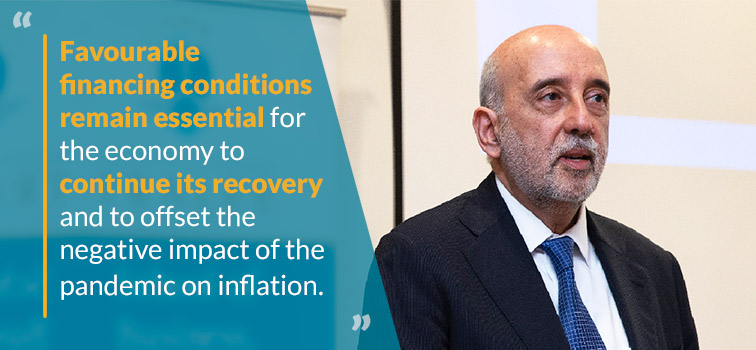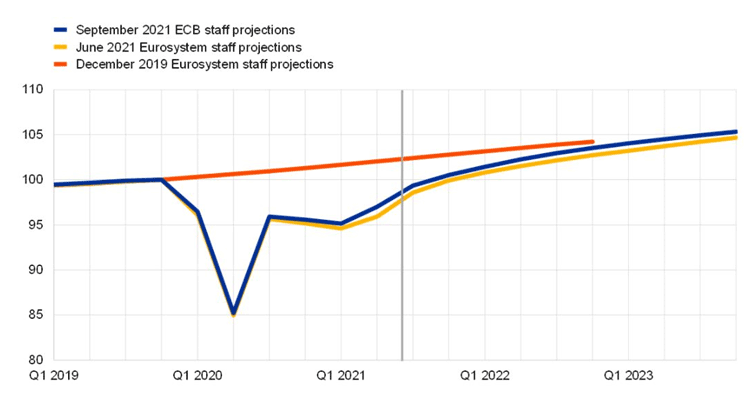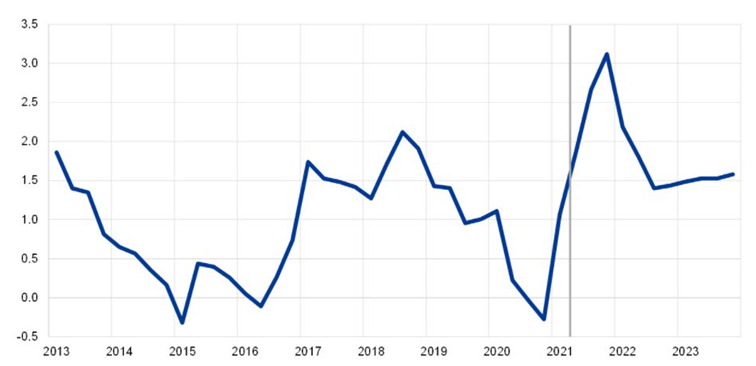The Euro Area Outlook
17 September 2021
Blog

Last week’s meeting of the ECB's Governing Council discussed the outlook for the euro area economy.
As we begin to recover from the COVID-19 crisis, growth in the euro area has improved strongly, while confidence indicators were at their highest level in more than two decades over the summer, reflecting surging optimism among firms and consumers. The picture is similar for the Irish economy and in our most recent quarterly bulletin, we outlined our expectations of relatively robust growth in headline measures of activity such as GDP, domestic demand and employment through to 2023. (The Central Bank’s forthcoming Quarterly Bulletin will be published October 6th).
For the euro area economy overall, recent ECB staff macroeconomic projections suggest real GDP will increase strongly this year (5%) and next (4.6%), before returning to a more normal rate in 2023 (2.1%). This means real GDP could exceed its pre-crisis level in the fourth quarter of 2021 (see Figure 1) and by the end of 2022 reach a level only slightly below what was expected pre-pandemic.
Figure 1: Euro area real GDP
(chain-linked volumes, 2019Q4 = 100)

Source: ECB Macroeconomics Projections
Inflation has also picked up recently, reaching 3% in August. This spike in inflation reflects a number of largely temporary factors, such as the rebound in energy prices from depressed levels last year and the reversal of a value-added tax (VAT) rate cut in Germany. There are also effects from the reopening of economies as supply has struggled to meet increased (or released) demand in several sectors leading to price pressures. ECB staff projections from last week suggest headline inflation will average 2.2% in 2021 before declining to 1.7% in 2022 and 1.5% in 2023 (see figure 2). These projections suggest that the current increase in inflation will be largely temporary while underling price pressures are building up only slowly.
Figure 2: Euro area HICP
Annual percentage changes

Source: ECB Macroeconomics Projections
Notes: The vertical line indicates the start of the projection horizon.
As well as the overall economic outlook, favourable financing conditions remain essential for the economy to continue its recovery and to offset the negative impact of the pandemic on inflation.
Our monetary policy decisions
In this context, we judged that favourable financing conditions can be maintained by slightly recalibrating the pace of our net asset purchases under the pandemic emergency purchase programme (PEPP) and continuing with our current policy stance for the rest of our instruments.
In my view, it will be important to maintain an accommodative monetary policy stance to ensure the continued recovery from the COVID-19 pandemic. Tightening monetary policy now in response to a temporary rise in prices would be harmful as we are trying to nurse the economy back to health.
With appropriate monetary and fiscal policies in place, a sufficiently strong demand-driven recovery should see inflation return to 2 percent over the medium-term, in line with the ECB’s inflation target. After a decade of too-low inflation, we should welcome a growing confidence and a faster-than-expected recovery to help re-align inflation expectations.
However, looking further ahead, there may be some cause for a cautious assessment of the inflation outlook. In the aftermath of the pandemic, many uncertainties remain, and structural changes to the economy may emerge to counteract the forces that have kept inflation low for so long.
Today, I spoke at the DEW Annual Economic Policy Conference on some of these issues.
Gabriel Makhlouf
Read more: